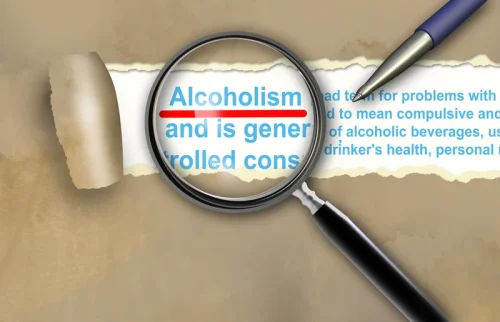Currently Empty: $0.00
Insomnia in sleep apnea patients can be managed with cognitive behavioral therapy and exercise training, finds study

Cognitive and behavioral therapies for generalized anxiety disorder (GAD) refer to a variety of techniques that can be provided individually or in combination. The basic premise underlying the therapy approaches is that thoughts, feelings and behaviors are inter-related, so altering one can help to alleviate problems in another (e.g., changing negative thinking will lead to less anxiety). The cognitive therapy techniques focus on modifying the catastrophic thinking patterns and beliefs that worrying is serving a useful function (termed cognitive restructuring). The behavioral techniques include relaxation training, scheduling specific ‘worry time’ as well as planning pleasurable activities, and controlled exposure to thoughts and situations that are being avoided.
International Patients
Research from 2020 and 2021 shows that both virtual and internet-based CBT holds promise for effective treatment. However, more research is needed to see how to best treat people virtually and if blended techniques could also be beneficial. The eventual aim of therapy is to teach you to apply the skills you have learnt during treatment to your daily life. Cognitive behavioral therapy (CBT) is a structured, goal-oriented type of psychotherapy (talk therapy).

Cognitive Behavior Therapy
The practice of cognitive behavioral therapy was first developed in the 1960s. Dr. Aaron T. Beck at the University of Pennsylvania designed and carried out experiments to test psychoanalytic concepts and found some surprising results. What he found was that in depressed patients, there were consistent instances of a stream of negative thoughts that seemed to emanate spontaneously.
Evaluation of effectiveness
- While CBT focuses on the interplay between thoughts, feelings, and behaviors, Behavioral Therapy zeros in on observable behaviors.
- As a result, a person may feel better, leading to a more positive cycle between these three things.
- Dr. Beck categorized these automatic negative thoughts into three categories.
- For instance, becoming an overly protective parent can be a behavior stemming from certain thoughts and feelings.
- When a person is distressed or discouraged, his or her view of an experience may not be realistic.
- Behavioral therapy and cognitive therapy were later integrated in terms of theory and practice, leading to the emergence of “second-wave” CBT in the 1960s.
If the issues are due to learning difficulties, substance use, or more complex diagnoses, then CBT may not be beneficial. In his practice, Beck noticed that his patients with depression often had distorted cognition. In other words, they experienced automatic negative thoughts that filtered reality in biased ways that made them feel bad. While CBT focuses on the interplay between thoughts, feelings, and behaviors, Behavioral Therapy zeros in on observable behaviors. It’s based on the principle that all behaviors are learned and can therefore be unlearned or modified.

What conditions can cognitive behavioral therapy (CBT) treat?

CBT generally focuses on specific problems, using a goal-oriented approach. The CBT Research and Training Clinic is committed to providing the best low-cost mental health care services available to adults living in the Bloomington area, including faculty, staff, and students at Indiana University. To accomplish this goal, we use empirically supported assessments and interventions, which are practices and strategies that are supported by research-based medical and scientific evidence. CBT is one of the most effective forms of psychotherapy for a variety of mental health diagnoses. Researchers have performed over 2,000 studies on CBT to date, making it the most widely researched form of psychological treatment. In conclusion, both Cognitive Behavioral Therapy and Behavioral Therapy have revolutionized the landscape of mental health treatment.
It usually costs £60 to £100 per session, but lower rates may be available to those on lower incomes. This should help you manage your problems and stop them having a negative impact on your life, even after your course of treatment finishes. The course of treatment usually lasts for between 6 and 20 sessions, with each session lasting 30 to 60 minutes. You’re shown how to change these negative patterns to improve the way you feel.
In cognitive behavioral therapy, people are often taught new skills that can be used in real-world situations. For example, someone with a substance use disorder might practice new coping skills cbt interventions for substance abuse and rehearse ways to avoid or deal with social situations that could potentially trigger a relapse. Rational emotive behavior therapy later sparked the creation of cognitive behavior therapy.
Your first therapy session
Behavioral therapy helps to identify this pattern and find ways to become more active again. Often, a first assignment involves self-monitoring, noting whether there are certain things, events, or times of day that trigger your symptoms. Future sessions focus on fine-tuning approaches to elicit helpful, adaptive self-talk, and problem-solving any obstacles that might prevent progress. Once you’ve gone through all the basic questions, established your goals, and identified distorted patterns of thinking, your therapist can work with you to pick the right techniques to assess and adjust those thoughts. Before therapy even begins, your therapist will probably ask you to fill out a questionnaire used to assess your mental health and keep track of progress later on.
How does CBT describe our emotions?

The theory of cognitive distortions by Beck and the theory of irrational thinking by Dr. Albert Ellis helped to better explain psychological problems. Beck theorized that in childhood, the development of maladaptive processes led to these problems. Dr. Ellis’s theory was based around a set of defined irrational beliefs, also known as common irrational assumptions. It has much to do with the belief that participants in the trials are suffering from less severe cases of psychological disorders.
Psychological and Brain Sciences
Talk to people you trust to give you a referral for a therapist who uses cognitive behavioral therapy, whether it’s your primary healthcare provider or a friend or family member. During CBT, a mental health professional helps you take a close look at your thoughts and emotions. Through CBT, you can unlearn negative thoughts and behaviors and learn to adopt healthier thinking patterns and habits. Mental health professionals, including psychologists, therapists and counselors, use it to treat or manage mental health conditions and emotional concerns.


